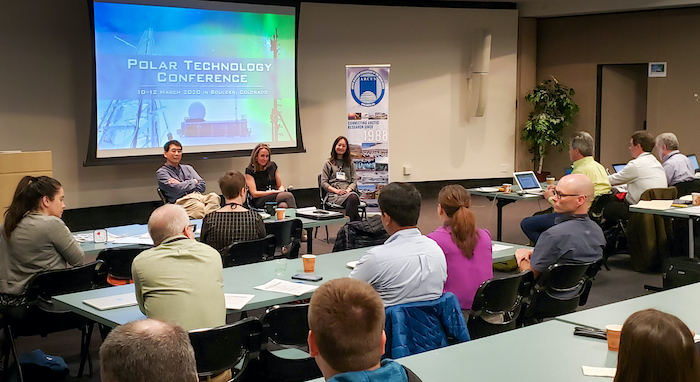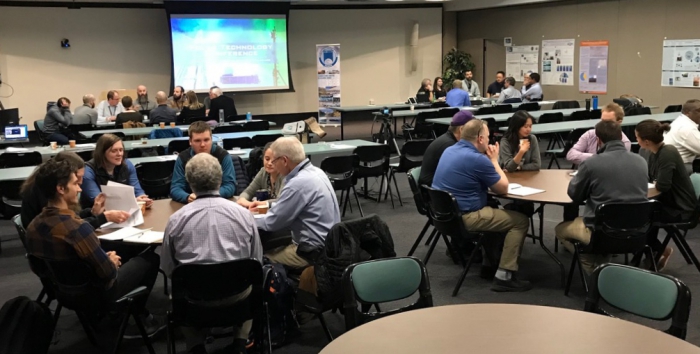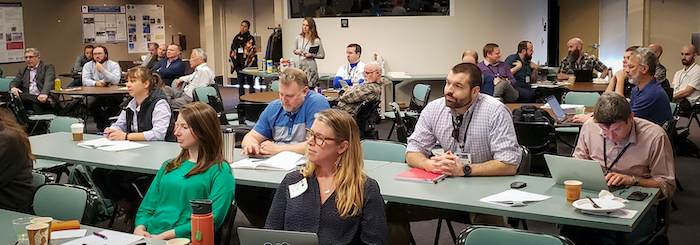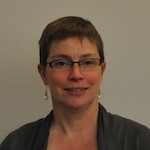By: Mark Seefeldt, Research Scientist with the Cooperative Institute for Research in Environmental Sciences (CIRES) at the University of Colorado Boulder; and Nancy French, Senior Scientist with the Michigan Tech Research Institute

Antarctica and the Arctic are common with their extreme environments, involving harsh climatological conditions, long polar nights, and concentrated field seasons during the summer months. Scientists and support personnel often encounter difficulties in achieving their goals due to the challenges involved in working in remote and harsh environments of the Arctic and Antarctic. Instrumentation, communications, power systems, and physical infrastructure are frequently modified from what is used in the lower latitudes to adapt and be successful in the polar regions. The result is that those who regularly work in the polar regions are interested in hearing what has worked for others, as well as brainstorming on new ideas to conquer the unforgiving environment. The Polar Technology Community is a new community born out of the Polar Technology Conference series with a goal of bringing common stakeholders together to share experience and ideas in the application of technology to the polar regions.
The Polar Technology Conferences are meetings of experts sharing experiences and challenges related to the applications of technology in the polar regions for the advancement of science goals. The Polar Technology Conferences originated out of informal gatherings at Stanford University in the early 2000s, focused on small autonomous power, weather, and communications systems. Polar Technology Conferences were held annually from 2005–2016 through a community driven effort that kept the Polar Technology Conference alive and relevant. The Polar Technology Conference went into hiatus after the 2016 meeting due the lack of administrative, planning, and funding assistance; but the Polar Technology Conference returned in March 2020 with administrative support from the Arctic Research Consortium of the US (ARCUS) and funding from the National Science Foundation (NSF) Office of Polar Programs. Participants of the Polar Technology Conferences represent a broad range of stakeholders in the polar regions including industry, academia, government, and military. The 2020 Polar Technology Conference was held at the University of Colorado Boulder from 10–12 March 2020. The original limit for the Polar Technology Conference was placed at 100 participants for funding and organizational considerations. COVID-19 had a significant impact on attendance with 29 cancellations. In the end, the Polar Technology Conference had 82 in-person attendees, representing the USA, Canada, and the United Kingdom, with a number of people from a long waitlist able to attend at the last minute. COVID-19 had the largest impact on international participation with cancelled registrants from China, Russia, United Kingdom, New Zealand, and Denmark. An online option was provided by ARCUS and there were approximately 130 remote attendees.
This year's Polar Technology Conference was centered around six themes: (1) science drivers, (2) instrumentation, (3) power systems, (4) communications, (5) data access and sharing, and (6) overarching and integrative technologies. For each theme, an invited keynote speaker kicked off a series of three presentations followed by a question and answer session for the panel of three presenters. Additionally, posters were presented covering the six themes. Strong interest in satellite communications leading up to the conference led to the formation of a special session with an in-depth overview of satellite communication options and coverage in both the Arctic and the Antarctic. The 2020 Polar Technology Conference also featured a small-format breakout discussion on the first day. The attendees formed groups of six to ten people to address polar challenges using a peer-coaching approach. Each member of a group was provided the opportunity to present a challenge and then receive guidance and problem solving strategies from the collective group. Attention from agencies and organizations outside of NSF for the 2020 Conference confirmed that researchers and technologists working in polar regions—from around the world—are eager to find a forum for exchanging ideas, challenges, and evolving technologies.
The need for a larger and ongoing community, the Polar Technology Community (Polar Technology Conference; Conference; Polar Technology Community) was realized and formed as an outcome of this year's Polar Technology Conference. The resultant Polar Technology Community is a new cohort of polar experts providing a continuing forum for the communication and exchanging of ideas and challenges. In this new structure as a community, the Polar Technology Conference expands the scope of activities beyond a conference, but will continue to focus around biannual Polar Technology Conference Workshops. Additionally, an online community, webinars, and connections with industry will provide ongoing forums for the sharing of ideas and experiences. The online community is being hosted by the Interagency Arctic Research Policy Committee (IARPC) and plans are to have quarterly webinars starting in 2021 to keep the community active and engaged. As the Polar Technology Conference evolves, attention will remain on dealing with cutting edge technologies for the polar regions across a range of stakeholders. An emphasis will also be placed on increasing the diversity of the community and the inclusion of a broad range of participants. We will focus on expanding diversity in both technological and disciplinary stakeholders that are active in Arctic research, as well as diversity in ethnicity, culture, and gender of our community. Striving for a broad participation will enhance the opportunities available for solving issues and building capability for facing the challenges of polar research.

The Polar Technology Community is expected to have a direct and positive impact on the Arctic and the science conducted in the Arctic. The Arctic is experiencing rapid climate change that is impacting the Indigenous communities, wildlife, and resources of the region. Success in understanding the changing climate of the Arctic is dependent on field programs, instrumentation, communication, and infrastructure for researchers to conduct novel and ongoing investigations. As climate change modifies the research environment, at the same time technologies that support research are changing, with more need for connectivity, instrument precision, and design that allows a range of practitioners to benefit from its use. The hope is that the Polar Technology Conference will be able to contribute, directly or indirectly, to the advancement of understanding and science in the rapidly changing Arctic.
More detailed information the 2020 Polar Technology Conference can be found here.
More information on the Polar Technology Community forum on IARPC can be found here.


About the Authors
 Mark Seefeldt is a research scientist with the Cooperative Institute for Research in Environmental Sciences (CIRES) at the University of Colorado Boulder. His research interests involve Arctic and Antarctic meteorology and climatology with eight field seasons in the Antarctic and one in the Arctic. In recent years, his emphasis has been on the in situ measurement of precipitation in Antarctica.
Mark Seefeldt is a research scientist with the Cooperative Institute for Research in Environmental Sciences (CIRES) at the University of Colorado Boulder. His research interests involve Arctic and Antarctic meteorology and climatology with eight field seasons in the Antarctic and one in the Arctic. In recent years, his emphasis has been on the in situ measurement of precipitation in Antarctica.
 Nancy French is a Senior Scientist with the Michigan Tech Research Institute where she works on sponsored research at the intersection of ecology and technology. She has focused on using remote sensing and geospatial technologies to study and inform terrestrial ecology, and in particular fire and the impacts of fire on the environment. She has studied fire in the boreal and Arctic region using advanced geospatial analysis and remote sensing supported with fieldwork measuring the structure and function of northern ecosystems.
Nancy French is a Senior Scientist with the Michigan Tech Research Institute where she works on sponsored research at the intersection of ecology and technology. She has focused on using remote sensing and geospatial technologies to study and inform terrestrial ecology, and in particular fire and the impacts of fire on the environment. She has studied fire in the boreal and Arctic region using advanced geospatial analysis and remote sensing supported with fieldwork measuring the structure and function of northern ecosystems.
